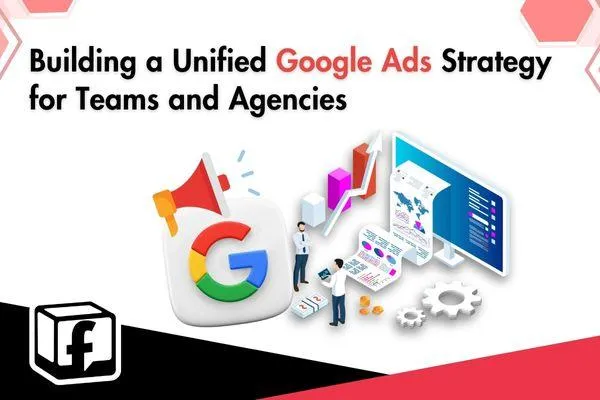
Building a Unified Google Ads Strategy for Teams and Agencies

Creating a Google Ads Playbook for Your Internal Team or Agency
Running Google Ads at scale—whether in-house or through an agency—requires more than launching a few campaigns. To achieve long-term performance, consistency, structure, and alignment are key. That’s where a Google Ads playbook comes in.
A well-designed playbook serves as your internal standard operating procedure (SOP). It documents everything from strategy to execution, ensuring your internal marketing team or agency partners follow unified workflows, maintain campaign consistency, and scale with confidence.
1. Define Your PPC Strategy and Objectives
Start with the “why.” Your PPC strategy must be aligned with overall business goals—whether it’s lead generation, sales, or app installs. Clearly define:
Primary and secondary campaign goals
Target audience segments
Success metrics (e.g., ROAS, CPA, CTR)
This clarity ensures that every team member or agency stakeholder is working toward the same outcomes.
2. Establish a Scalable Ad Account Structure
Your ad account structure sets the foundation for control and optimization. Outline how to:
Organize campaigns by objective, region, or product
Group ad sets by match type or audience intent
Use naming conventions for easy tracking and reporting
A scalable structure reduces confusion and supports better Google Ads management.
3. Standardize Campaign Creation and Optimization Processes
Document a repeatable campaign optimization process, including:
Keyword research and match type guidelines
Ad copywriting standards and character limits
Scheduling and bidding practices
How and when to use ad extensions
Negative keyword strategy
This step ensures PPC workflow efficiency and quality control across teams.
4. Assign Roles and Task Delegation
Avoid overlap and missed steps by assigning clear roles. Who handles:
Keyword analysis?
A/B testing?
Conversion tracking setup?
Creative approvals?
Clear PPC task delegation keeps campaigns moving and team members accountable.
5. Set Up Performance Tracking and Reporting Templates
No Google Ads playbook is complete without measurement guidelines. Include:
How to track conversions (GA4, Tag Manager, etc.)
Which KPIs to monitor weekly, monthly, quarterly
Reporting frequency and format
Tools used (e.g., Looker Studio, Google Analytics)
Effective performance tracking in Google Ads helps you make informed decisions faster.
6. Include Training and Continuous Learning Resources
A great playbook isn’t static. Include training modules or resources for onboarding and skill development. Provide:
Links to Google Ads certification
Internal training videos or decks
Industry blogs or webinars
Documented FAQs or troubleshooting guides
This ensures your Google Ads training process is embedded into your team culture.
Conclusion:
A strong Google Ads playbook empowers your internal marketing team or agency to execute campaigns with consistency, efficiency, and strategic alignment. By documenting your PPC workflow, optimizing your account structure, and standardizing your campaign optimization process, you create a scalable system that drives real results.
In today’s competitive PPC environment, ad-hoc strategies won’t cut it. Build a solid foundation with a playbook that’s tailored to your goals—and watch your Google Ads performance grow, team by team, campaign by campaign.
How Ads with Finesse Can Help You
At Ads with Finesse, we specialize in crafting ad campaigns that highlight the best customer experiences, ensuring your audience connects with your brand on an emotional level. Our team carefully selects authentic, high-impact reviews and seamlessly integrates them into your ad strategy.
Learn more about our services today and turn your Google Ads into your most powerful marketing tool with Ads with Finesse.
Let’s create ads that resonate, convert, and build trust.
Check out our blog and services at adswithfinesse.com.